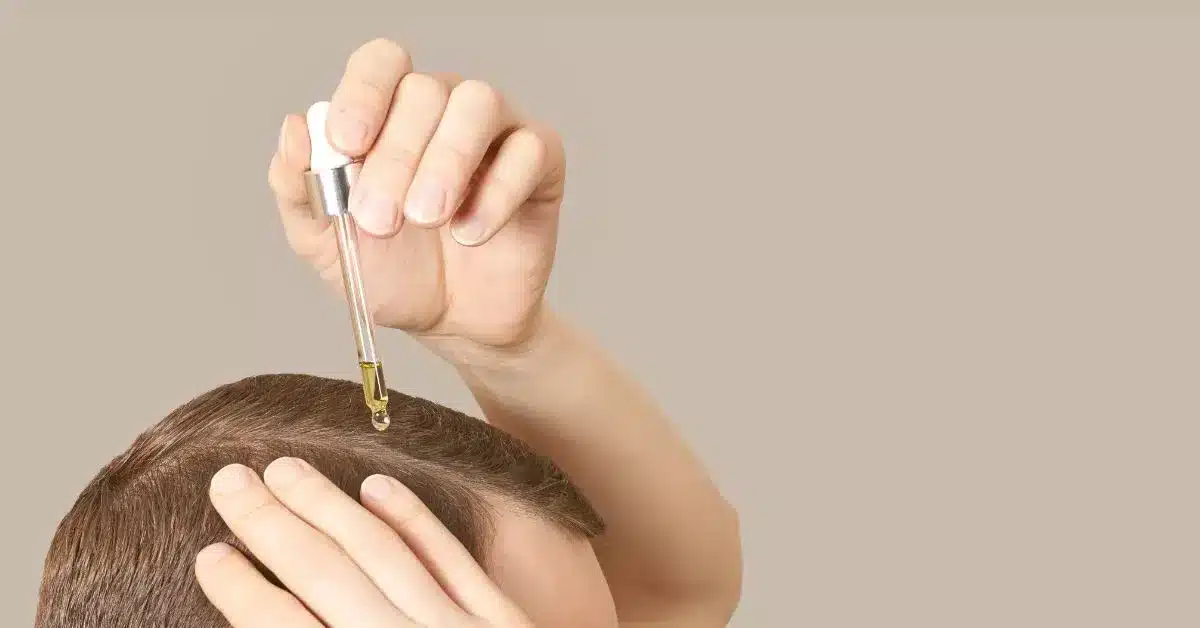Revive Your Hairline: The Power of Minoxidil for Frontal Baldness Treatment
Frontal baldness, a receding hairline or male pattern hair loss, is a condition that can significantly impact an individual’s appearance and self-esteem.
Many treatments have been explored to address this issue, and one of the most popular and effective options is Minoxidil.
Minoxidil is a topical medication approved by the FDA for treating androgenetic alopecia, including frontal baldness.
Although, shreds of evidence suggest that the frontal part of the scalp can benefit from using 5% Topical Minoxidil foam for hair regeneration.
It works by promoting hair growth and slowing down hair loss.
This article discusses the causes and effectiveness of Minoxidil for frontal baldness.
Working of Minoxidil
Minoxidil, a topical medication, is commonly used to promote hair growth in individuals with androgenetic alopecia (male or female pattern baldness).
Its exact mechanism of action has yet to be fully understood.
But it is believed to work by widening blood vessels, increasing blood flow to the hair follicles, and improving nutrient delivery to the hair follicles.
This may prolong the hair cycle’s anagen (growth) phase and promote the development of thicker and longer hair.
Minoxidil is also thought to stimulate hair follicle cells, leading to increased hair shaft diameter and stimulation of hair growth.
Additionally, Minoxidil may have anti-inflammatory effects that could further contribute to its hair growth-promoting properties.
Does Minoxidil work on frontal baldness
Yes, Minoxidil effectively treats frontal baldness or a receding hairline in some individuals.
It improves blood flow to the hair follicles and promotes hair growth.
There is evidence from clinical studies that Minoxidil can effectively treat frontal baldness.
A study published in the Indian Journal of Dermatology, Venereology, and Leprology showed that 5% Minoxidil foam applied once daily effectively treats frontal hair loss in men after 24 weeks of treatment.
However, it’s important to note that individual responses to Minoxidil may vary, and results may take time to become apparent.
Minoxidil is most effective when used consistently and long-term, and hair growth may not be the same for everyone.
Causes of baldness
Baldness, or hair loss, can have various causes, including
Androgenetic alopecia
It is the most common cause of hair loss and is often referred to as “male pattern baldness” or “female pattern hair loss.”
It is believed to be genetic and related to hormonal factors, with a sensitivity of hair follicles to the hormone Dihydrotestosterone (DHT) leading to gradual miniaturization of hair follicles and thinning of the hair.
Medical conditions
Certain medical conditions that can cause hair loss are as follows:
- Hormonal imbalances (e.g., thyroid disorders)
- Autoimmune diseases (e.g., alopecia areata)
- Scalp infections (e.g., fungal infections)
- Medical treatments (e.g., chemotherapy)
Nutritional deficiencies
Inadequate intake or absorption of certain nutrients, such as Iron, Zinc, vitamin D, and Biotin, can contribute to hair loss.

Physical or emotional stress
Severe physical or emotional stress, such as illness, surgery, trauma, or significant emotional distress, can trigger temporary hair loss, known as Telogen effluvium.
Hairstyling practices
Excessive or prolonged use of certain hairstyling practices that can cause damage to the hair shaft and lead to hair loss are
- Tight hairstyles (e.g., braids, ponytails),
- Frequent use of heat styling tools (e.g., curling irons, straighteners), and
- Harsh chemical treatments (e.g., perming, coloring).
Genetics
Family history and genetic predisposition can play a role in hair loss, with a history of hair loss in close family members potentially increasing the risk.
Age
As individuals age, the rate of hair growth may decrease, and hair may become thinner and more prone to falling out.
Medications
Certain medications, such as some antidepressants, blood thinners, and blood pressure medications, may have hair loss as a side effect.
Conclusion
Minoxidil is a commonly used topical medication for treating frontal baldness.
Although not fully understood, its mechanism of action is believed to involve increasing blood flow to the hair follicles.
It thus improves nutrient delivery and stimulates hair follicle cells.
While Minoxidil may show promising results for some individuals with frontal baldness, it is essential to consult a healthcare professional for a proper diagnosis and personalized treatment plan.
Frequently Asked Questions
What helps with frontal baldness?
Treatment options for frontal baldness may include topical minoxidil, hair transplant surgery, and cosmetic procedures such as scalp micro pigmentation or hair fibres. Consultation with a healthcare professional or dermatologist is recommended for personalized treatment plans.
How can I regrow my frontal hairline?
There is no cure for a receding hairline, but some medications can slow it down and help hair regrow. Medicines like Finasteride, Minoxidil, Anthralin, and Corticosteroids. Moreover, hair transplants and laser therapy is also an alternative.
Can frontal hair loss grow back?
Yes, frontal hair loss can grow back with various treatments such as medications, laser therapy, and hair transplant procedures. A healthcare professional can provide personalized recommendations based on the individual’s condition.
Why is Minoxidil not for frontal baldness?
Minoxidil effectively promotes hair growth on the scalp where hair follicles are present. It may only be effective on partially bald areas where hair follicles are present. It requires existing hair follicles to stimulate the growth of new hair.
Will Minoxidil help with frontal baldness?
While Minoxidil is generally known to promote hair growth, it is typically less effective in the frontal region of the scalp. However, some studies suggest that 5% topical Minoxidil foam may still show potential for hair regrowth in the frontal area.
WowRx uses only high-quality sources while writing our articles. Please read our content information policy to know more about how we keep our content reliable and trustworthy.






